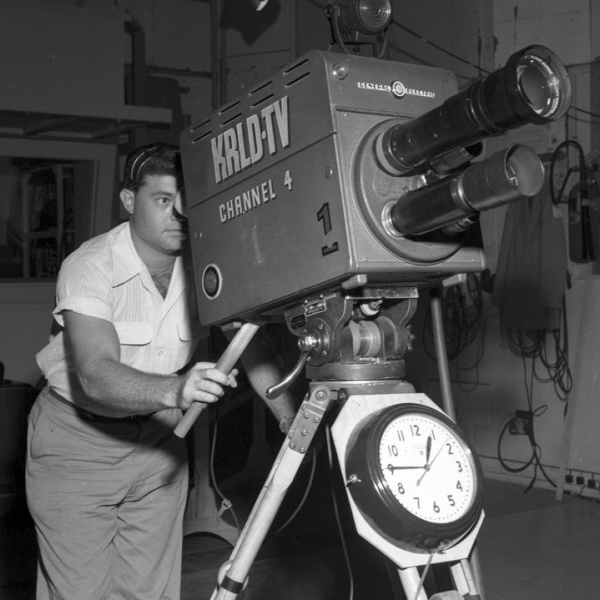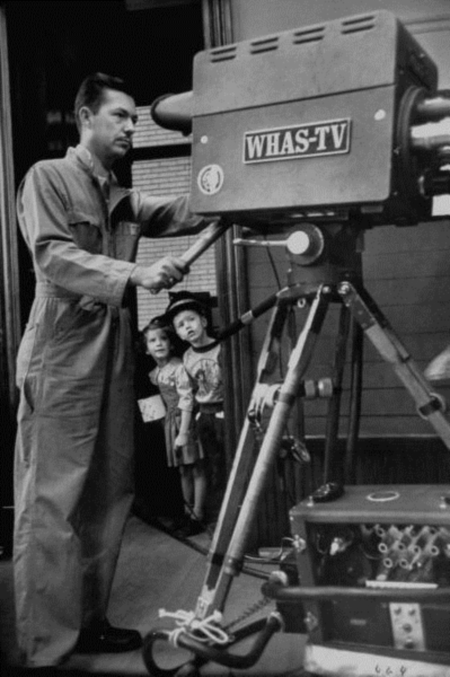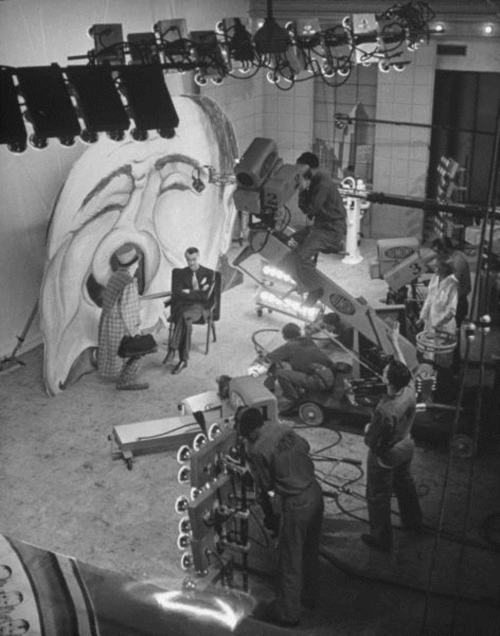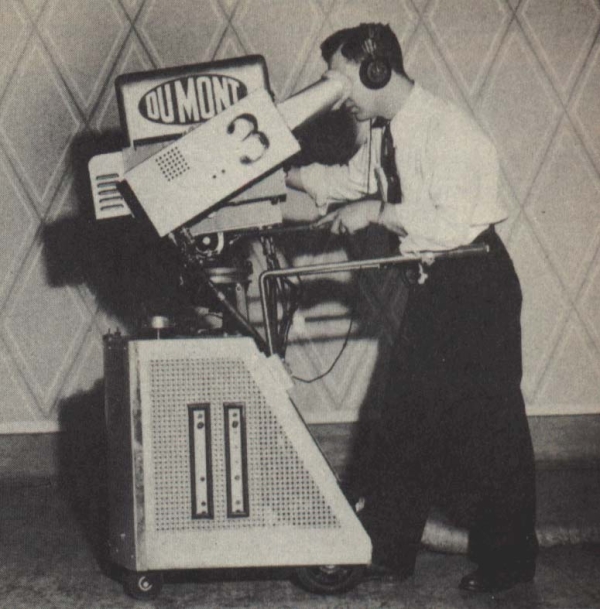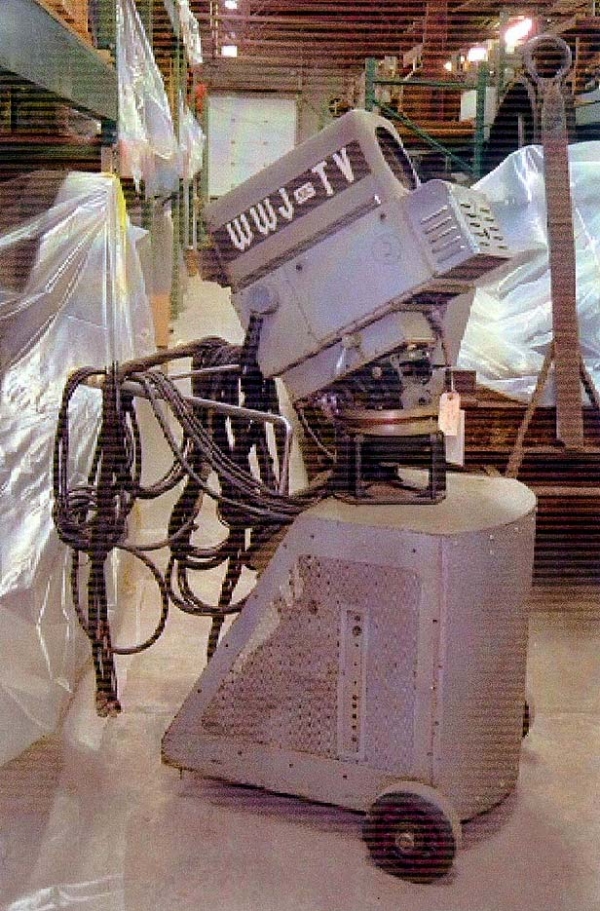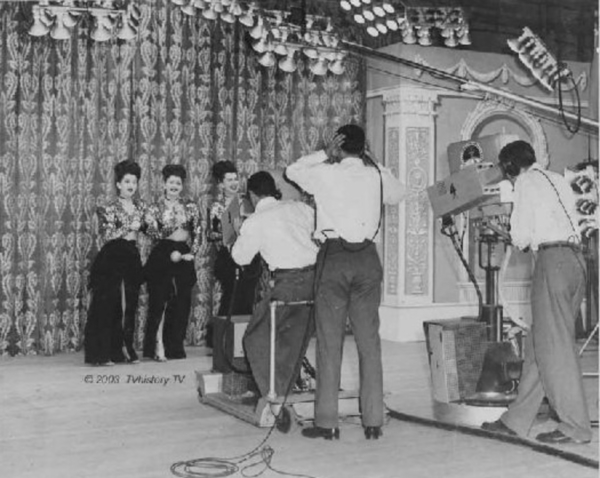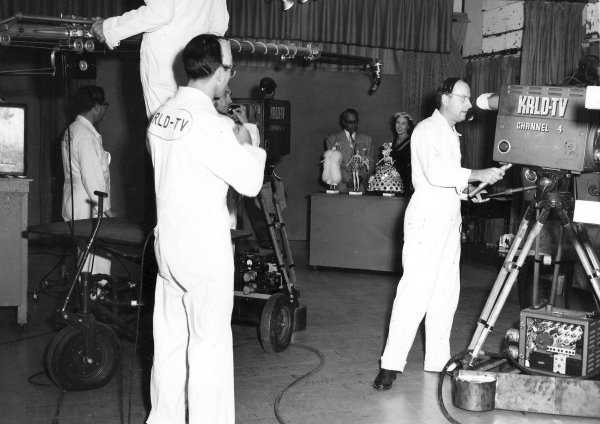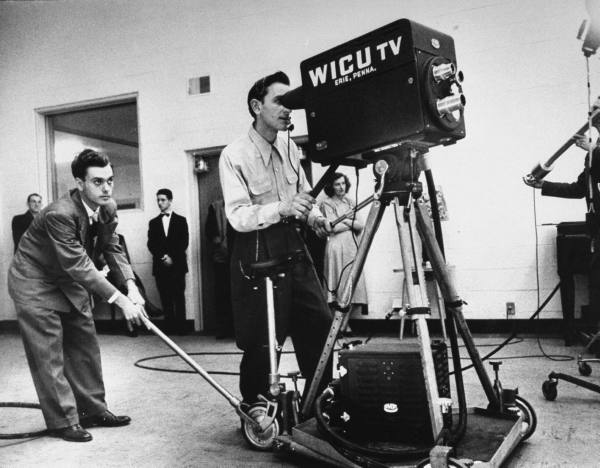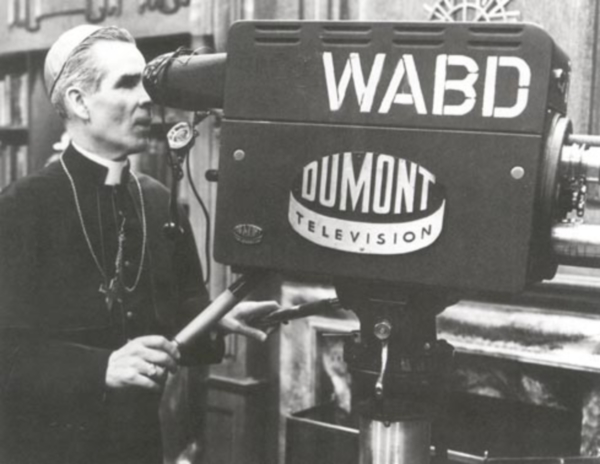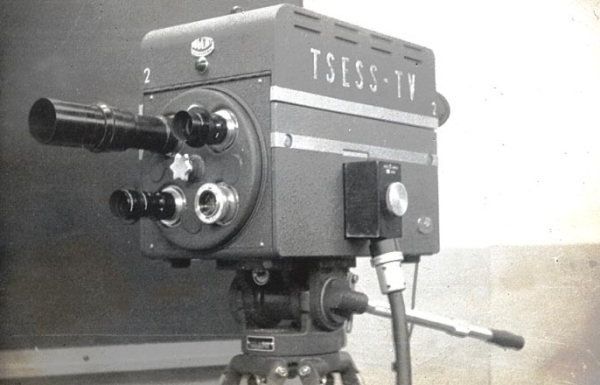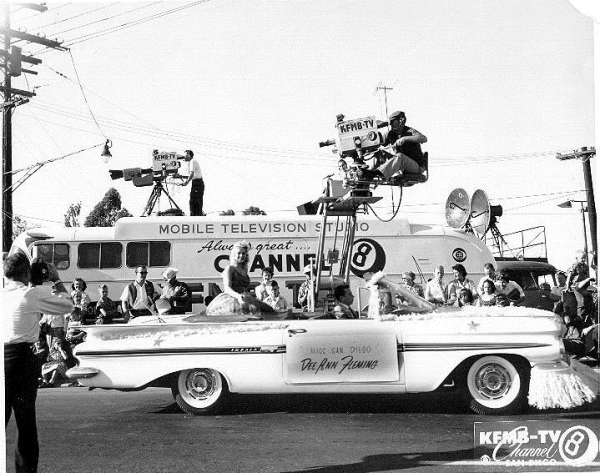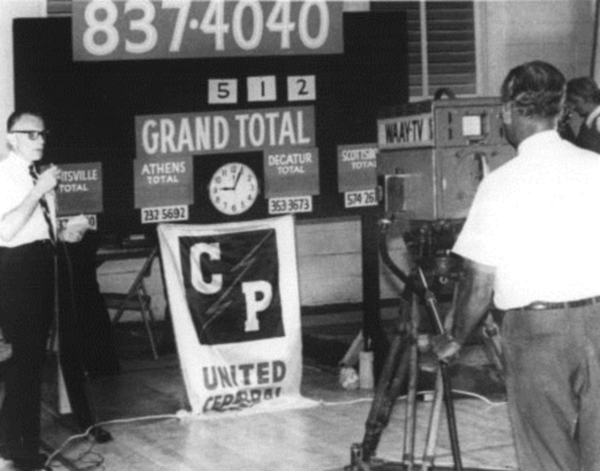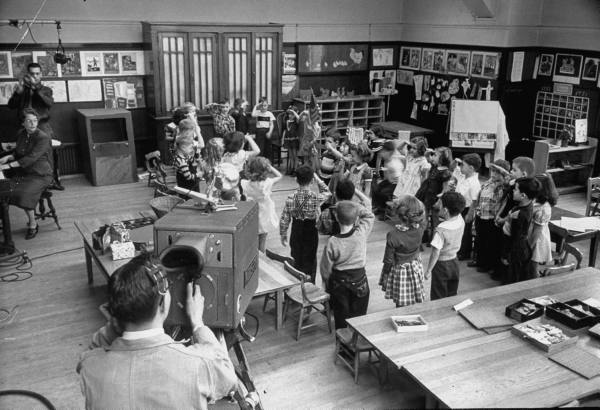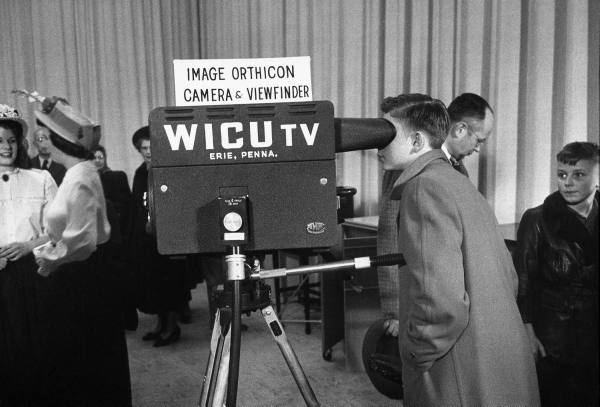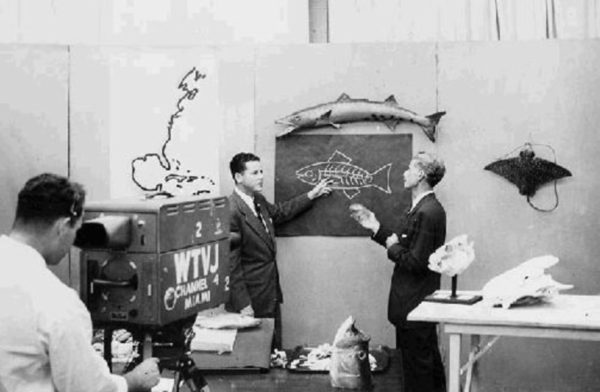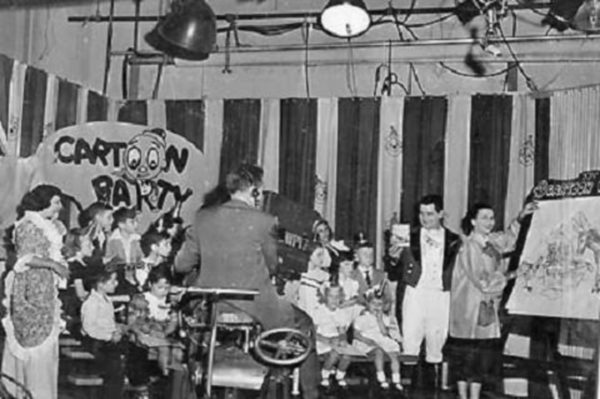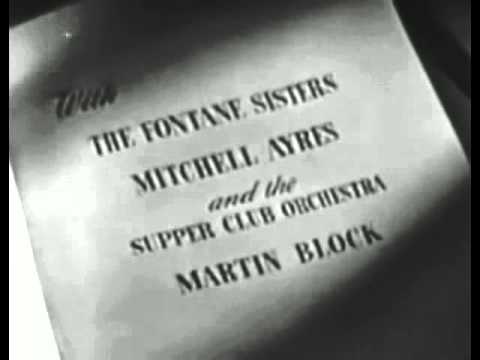First, a note on early RCA black-and-white camera version and model numbers. In the early days, RCA made two versions of its camera models. The first numeral following the TK is the Version Number. The second numeral is for the Model Number. For example, the Studio version of the 0 model was always identified with a 1 (in this case TK10), and a Field version of the 0 model with a 3 (as in the TK30).
Except for the TK10s and TK30s, the cameras looked and worked exactly alike and would work in the studio or in the field…the only real difference was in the camera chain. The studio chains could be more complex because they never moved, but the Field chains had to be able to do the same job with less equipment and with less power.
The RCA TK30 was introduced in 1946 and was used extensively throughout the 1950s Golden Age of Television. The field version of this camera was introduced first because the military uses were given priority over commercial use. The TK10s and 30s used a 3 inch image orthicon tube with a 4-lens turret and a variety of lenses could be used on them. Kodak developed a series of lenses for these RCAs called Ektanons. Although the TK30 was the field version of the TK10, many TK30s were widely used in studios as well because remember, the difference is not in the camera…it is in the camera chain. Below is the perfect picture to show the cosmetic differences between these two cameras.
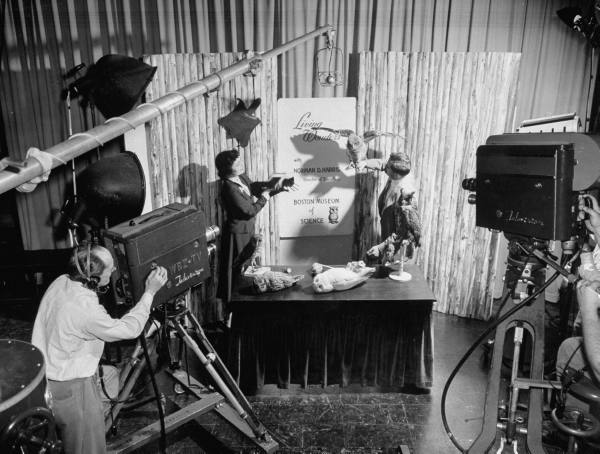
In the photo above taken at WBZ in Boston, the camera on the left is an RCA TK30. The on the right is a TK10 and it has a higher crown on top of the viewfinder and double chrome piping on the viewfinder where as the TK30 has a lower crown and no chrome, but does have a handle for lifting the viewfinder.
Just a note about the WNBT, WRCA and WNBC call letters on the cameras you will see here. WNBT was the original set of call letters of the NBC owned-and-operated station in New York city, and was located among the network’s studios at 30 Rockefeller Plaza. The call letters later changed to WRCA in 1954 and finally to WNBC in 1960. Until the TK40s and color came along, most cameras owned by NBC had the network logo as well as the local station call letters on their sides.
New York was WNBT…the T for NBC Television. Washington D.C. was WNBW…the W for NBC Washington. Los Angeles was KNBH…the H for NBC Hollywood. Chicago was WNBQ and the Q was a tieback to WMAQ radio that NBC had owned since the 1920s. All of the TK10-30 and TK11-31 cameras NBC owned were interchangeable between network, and local studios and between studios and remote units. Remember, it was the chains that were different, not the camera heads.
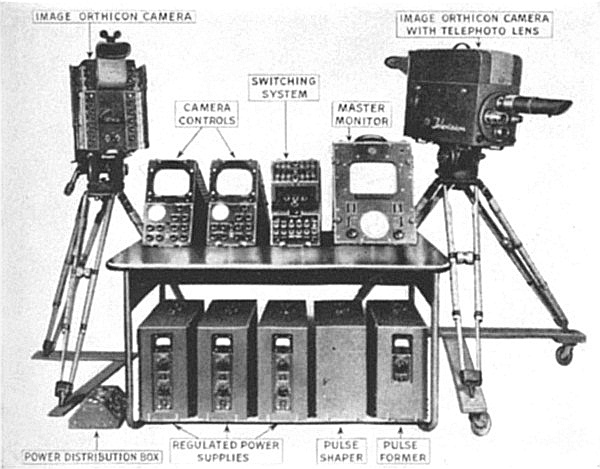
Above is the RCA catalog image showing two full TK30 broadcast chain. At the bottom of this page is the RCA price list for all these cameras and accessories. Here is the RCA introduction of the TK30.
TK10s And TK30s at NBC
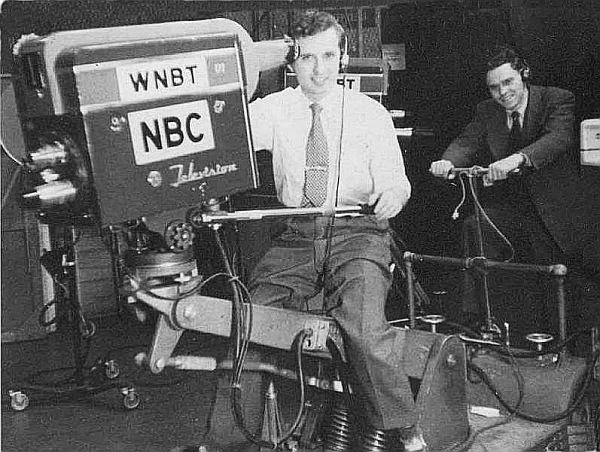
Above and below, my friend Frank Merklein. Up top, Frank is operating a TK10 at NBC in 1952. The “volunteer” dolly pusher is the director of The Howdy Doody Show, on which Frank worked in both B&W and color. In fact, there is a special feature in the new Gallery section on Frank as he not only operated the first TK40 color cameras at the famous Colonial Theatre and in Studio 3K at 30 Rock (their first color studio), but also served on the NTSC color system panel.
Below, Frank (right) is operating a super duper TK30 with teleprompter and RCA Electrazoom lens on the very first Today with host Dave Garroway. Both shots below are from January 14, 1952…it was the debut of Today and Frank was there.
Above photo courtesy Frank Merklein. Below photos courtesy Life Magazine.



Above and below, John Cameron Swayze delivers the news in March of 1949, less than a month after the debut of the Camel News Caravan as NBC’s first regularly scheduled television news broadcast with a live reporter. Swayze hosted this 15-minute show from Studio C of NBC’s little known Uptown Studios, at 105 East 106th Street. That location was bought from Pathe, and both NBC and Pathe worked hand-in-hand at their adjacent processing labs on NBC’s kinescope film distribution.
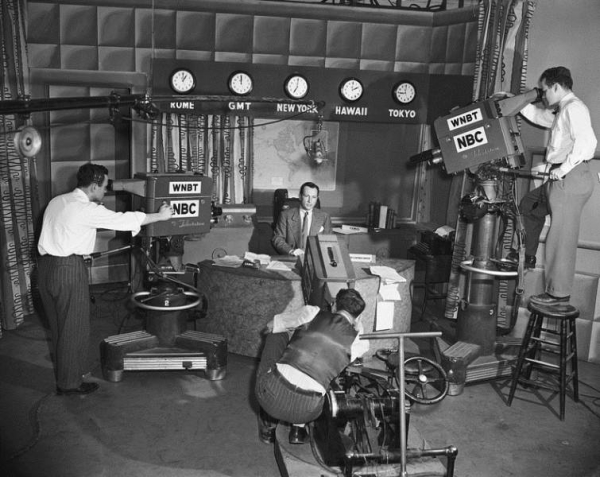
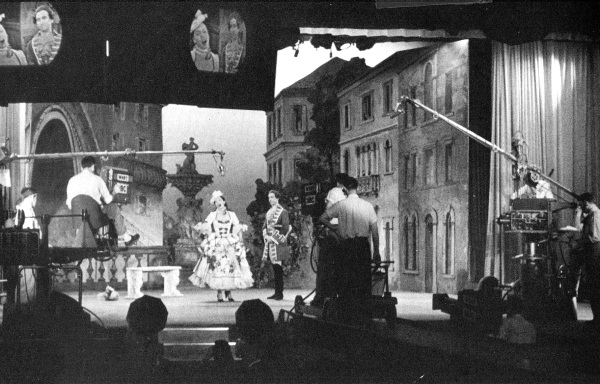
Above, four TK30s capture a slice of history as Sid Caesar and guest Nanette Fabray fill the country with laughter on Your Show of Shows. This Pat Weaver creation was ninety minutes long and was done live weekly from 1950 until June of 1954 from the International Theater at Columbus Circle. In September 1954, Caesar returned, minus co-star Imogene Coca, for Caesar’s Hour, which ran until 1957. Coca was replaced by Fabray on Caesar’s Hour. Ninety minutes of live television is hard to do, even with writers like Carl Reiner, Mel Brooks, Neil Simon, Larry Gelbart, Woody Allen and more. All hail Caesar.
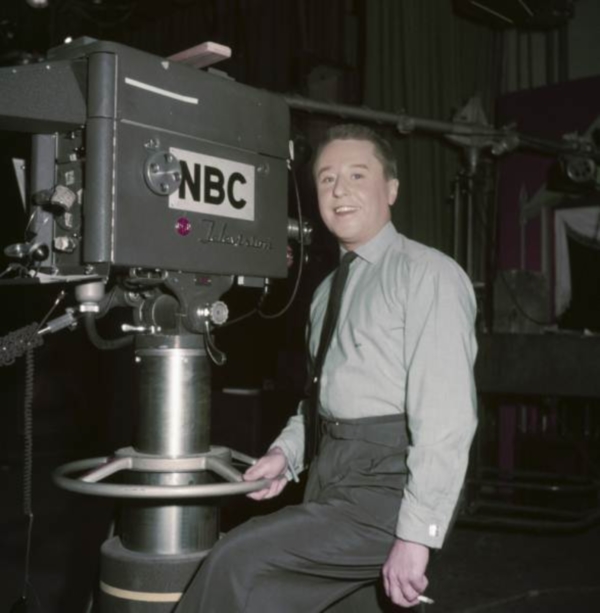
George Gobel with an NBC New York TK30 in a rare color photo.
Photos courtesy NBCU Photobank.com. All Rights Reserved. This image cannot be archived, sold, leased or shared.
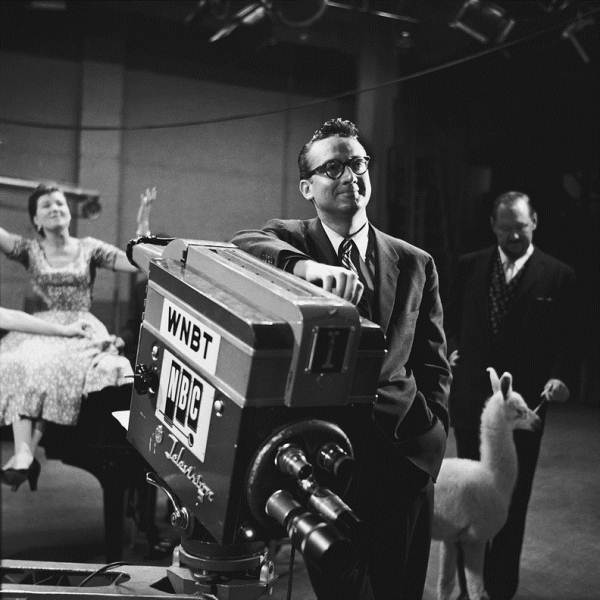
Tonight host Steve Allen with an NBC TK10 at The Hudson Theater. This is the studio version of the TK30. The major difference is in the look of the cameras…the TK10 does not have a leather handle on top, and has the extra chrome effects on the viewfinder.
Photos courtesy NBCU Photobank.com. All Rights Reserved. This image cannot be archived, sold, leased or shared.

It’s Howdy Doody time! An RCA TK10 captures Clarabell and a friendly cowboy in 1954 as he and Buffalo Bob host Colgate’s Fifth Anniversary Party on NBC, at The Center Theater. It was not unusual for the cameras to have their doors open for ventilation; network cameras tended to be hotter than the cameras at local stations because they were usually on for longer periods of time. Photos courtesy NBCU Photobank.com. All Rights Reserved. This image cannot be archived, sold, leased or shared.

The photo above raises several questions. First, can you spot the third person in the photo? Second, do the “ears” make this a Mickey Mouse camera? Third, where is the viewfinder for this TK30? Answer to the first, he’s crouched behind the camera in front of the CCU. Second question’s answer…yes, in a way it is a Mickey Mouse camera, but the mouse ears on top are not the reason. Those ‘ears’ are actually sort of a “gun site” for aiming the camera. Third answer, the viewfinder? Well…that has not been built yet and that is Mickey Mouse!
Say it ain’t so, Joe! Thanks to Chuck Pharis, we have learned that the very first TK30s shipped to non NBC owned stations, were shipped with no viewfinders. He had heard the story years ago at ABC from a long time cameraman, and with more research has found the story true. How long a lag and why are not known, but probably not more than a few months and the glitch was most likely related to a short supply of key parts, perhaps deflection or high voltage components.
Below are more pictures from Chuck. On the left, an RCA catalog image of the TK30 carrier top and viewfinder. Right, WOW-TV doing a basketball game in December 1946 with their new TK30s, without their viewfinders.
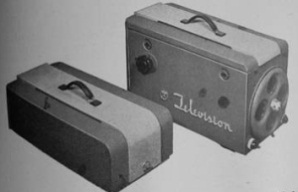

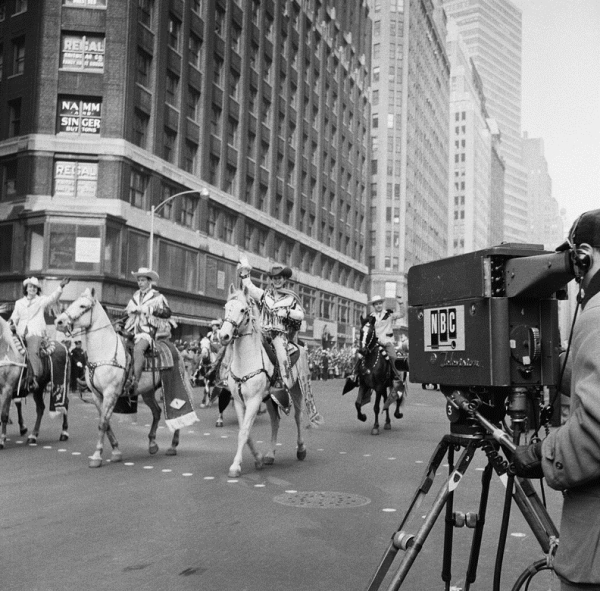
Here is a TK30 covering the 1954 Macy’s Parade. The camera has the new NBC Chime Logo. Photo courtesy NBCU Photobank.com. All Rights Reserved. This image cannot be archived, sold, leased or shared.
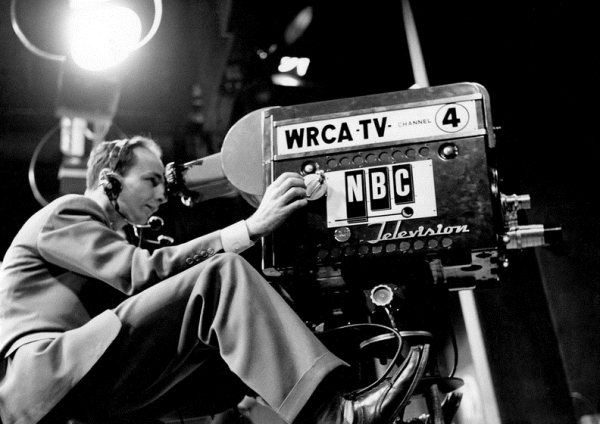 An RCA TK10, the studio-based sibling of the TK30, wearing the identity of New York’s NBC affiliate WRCA-TV (the former WNBT and the current WNBC). See the holes at the top and bottom of the side doors? Complaints about the heat led RCA to offer kits that helped bring in cool air and expel heat. This feature is mostly found on the network cameras, since they got hotter. Photos courtesy NBCU Photobank.com. All Rights Reserved. This image cannot be archived, sold, leased or shared.
An RCA TK10, the studio-based sibling of the TK30, wearing the identity of New York’s NBC affiliate WRCA-TV (the former WNBT and the current WNBC). See the holes at the top and bottom of the side doors? Complaints about the heat led RCA to offer kits that helped bring in cool air and expel heat. This feature is mostly found on the network cameras, since they got hotter. Photos courtesy NBCU Photobank.com. All Rights Reserved. This image cannot be archived, sold, leased or shared.

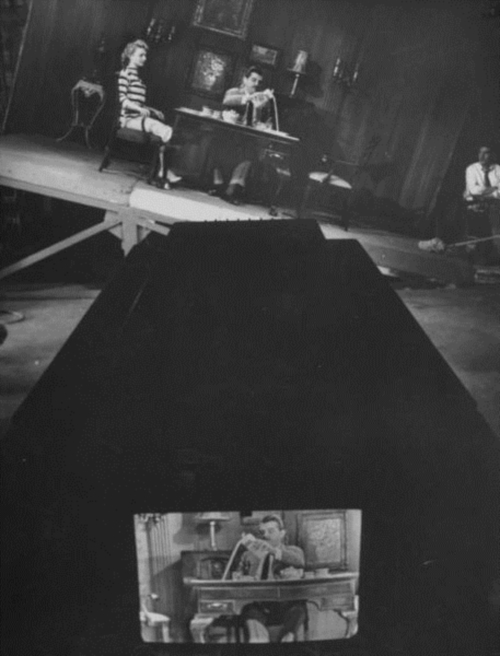
Two rare photos from March 1957 show Ernie Kovacs doing some of what made his offbeat comedy show such a hit. He was the first to make special camera tricks a part of his programs. It was not unusual for cameras, crew and even control room people to show up or be heard during his shows at NBC. Ernie pretty much took down the “fourth wall.” Photo courtesy of Life Magazine
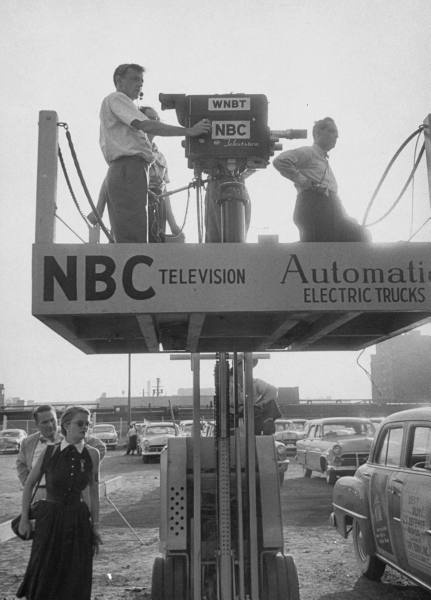
As one of the first political conventions ever broadcast live, the 1952 Republican convention in Chicago had massive coverage (more below in the CBS and ABC section). All the stops were pulled and camera coverage ranged from the outside, lift-mounted TK30s above to the debut of the RCA “Walkie Lookie” camera by NBC, shown below. Photo courtesy Life Magazine
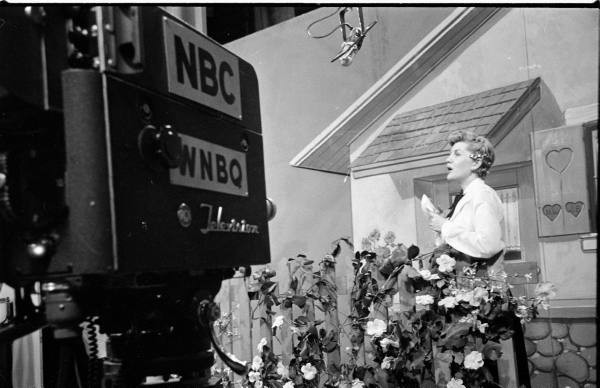
In August of 1950 a TK30 brings a national audience The Zany Show live from NBC’s Chicago facilities at WNBQ.
Photo courtesy of Life Magazine

Bob Hope and guest live April 9, 1950 at The New Amsterdam Theater for his first ever live television show. The Star Spangled Revue was a 90 minute special directed by Max Leibman and Bob’s guests were Douglas Fairbanks (seen here), Dinah Shore and Bea Lillie. Shot with RCA TK10s. Photo courtesy of Life Magazine
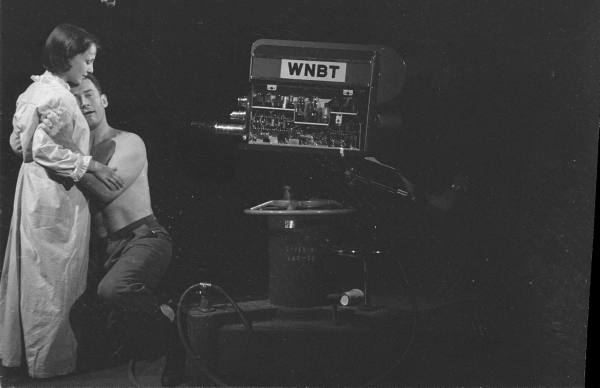
TK10 broadcasts the 1951 presentation of Fireside Theatre.
Photo courtesy of Life Magazine
TK10s And TK30s at CBS

“The Great One” himself, Jackie Gleason is seen at rehearsal at CBS Studio 50 (later renamed The Ed Sullivan Theater) in February 1955. The set is from the “Honeymooners” segment of The Jackie Gleason Show. The man behind the camera is CBS legend Pat McBride, who did all of the big shows, including Ed Sullivan. He also became a sports television legend for CBS. Photo courtesy CBS Photo Archive. All Rights Reserved. This image cannot be archived, sold, leased or shared.
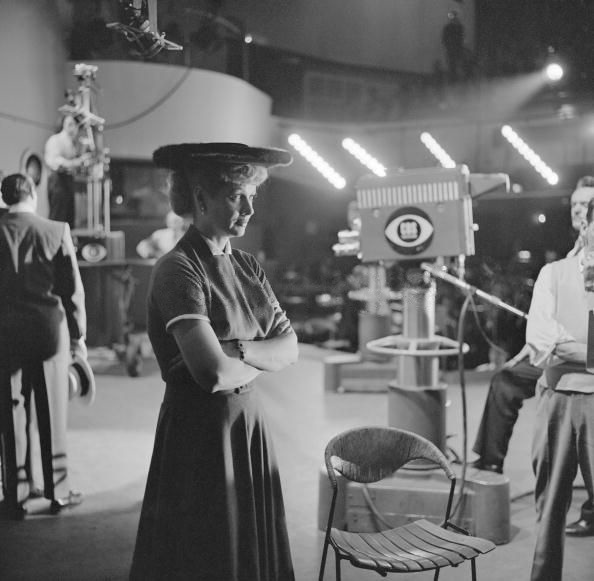
Above, the one and only Lucille Ball and below, Audrey Meadows (Jackie Gleason’s TV wife) and sister Jayne (Steve Allen’s real-life wife). All three are getting ready for their rehearsals on The Ed Sullivan Show as TK30s get ready…Lucy in ’56 and the Meadows sisters in ’54. The image of Lucille Ball is very interesting as you can see behind her the audio booth where CBS legend Art Shine made his magic for so long as the Sullivan program’s chief audio engineer. Photos courtesy CBS Photo Archive. All Rights Reserved. This image cannot be archived, sold, leased or shared.
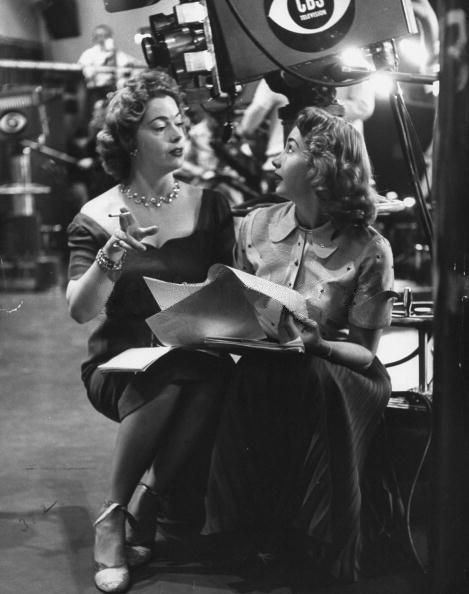
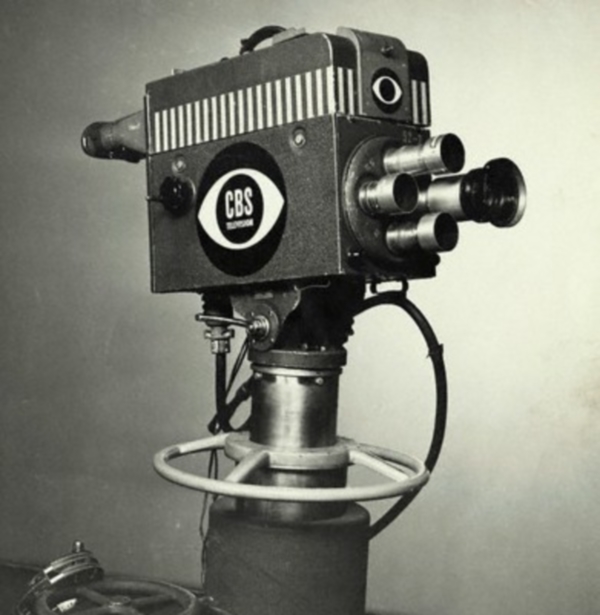
Did you ever wonder about those striped bands on the CBS cameras? I had always been curious about it too, but no one I knew had the answer. A few years back, while creating the artwork for my TK11’s stripes, my friend Pete Fasciano, creator of the Avid Editing System and a TV technology historian, noticed the black horizontal lines and the alternating grey/white vertical lines were the basis of a grey scale camera setup test pattern. Pete should know…he did the restoration of the original RCA Indian Head test pattern for Chuck Pharis.
Pete talked about how the preamplifier settings on these cameras often drifted off as they got hotter and had to be adjusted by the camera operator and how easy this could be if there was a convenient – say like on another camera – simple grey scale pattern around to quickly swing to, focus and adjust within a few seconds and then swing back to the scene they were shooting. Eureka! CBS New York veteran Jorgen Kirleis (now retired) verified Pete’s suspicion that the banding was actually a brilliant “quick trick” the CBS engineers had come up with. The reason the banding was not used much on the TK11/31s probably has to do with the fact that now there were handles on each side and with them in place over the banding, sharp focus on the lines was more difficult.
Photo courtesy Life Magazine.
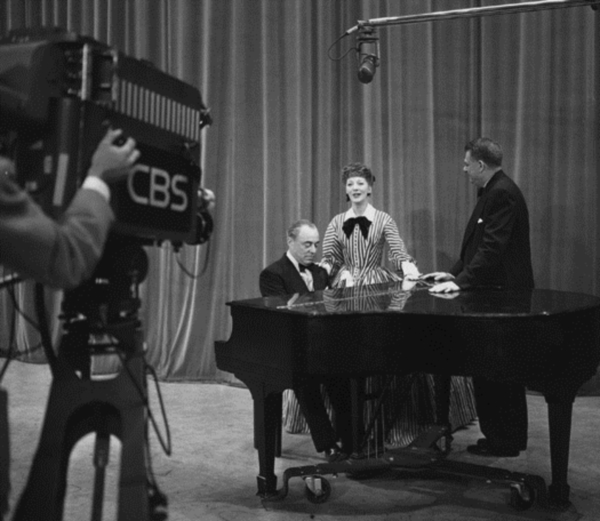
Richard Rodgers (at piano), Gertrude Lawrence, and Oscar Hammerstein (right) appear on the Ed Sullivan’s Toast of the Town on September 16, 1951 with RCA TK10 in foreground. Note the original markings CBS cameras wore prior to the the introduction of the famous “Eyemark” logo in late 1951. Photo courtesy CBS Photo Archive. This image cannot be archived, sold, leased or shared.
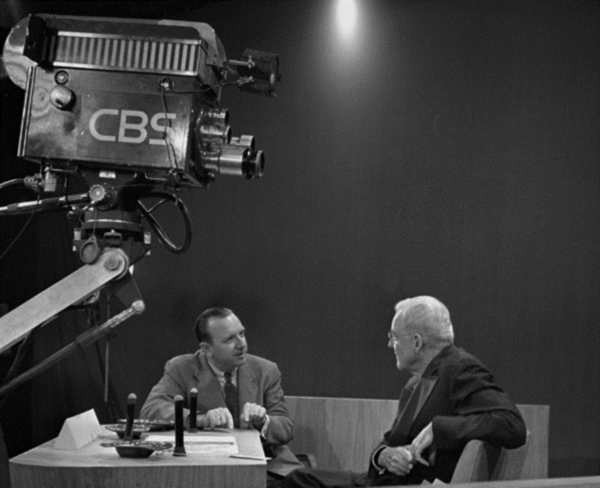
August 21, 1952 Walter Cronkite (left) interviews John Foster Dulles on Pick The Winner with an RCA TK10 in the foreground. Even though the “Eyemark” had been the logo for the CBS Television Network for close to nine months, this TK10 still carries the CBS logo designed by William Lescaze in the 1930s.Photo courtesy CBS Photo Archive. This image cannot be archived, sold, leased or shared.
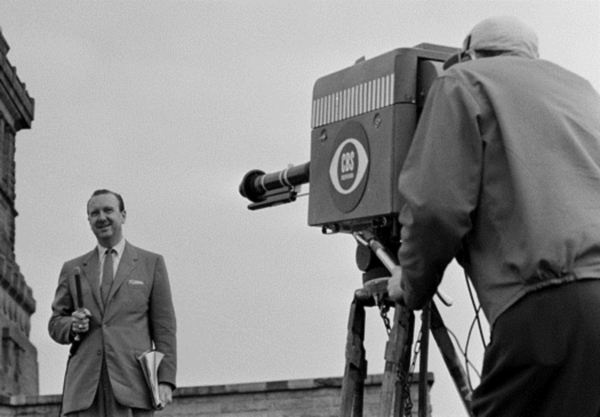
June 10, 1954: Walter Cronkite, host of The Morning Show, reports from the Children’s Expedition to the Statue of Liberty, New York via an RCA TK30 equipped with a massive Zoomar field lens. Photo courtesy CBS Photo Archive. This image cannot be archived, sold, leased or shared.
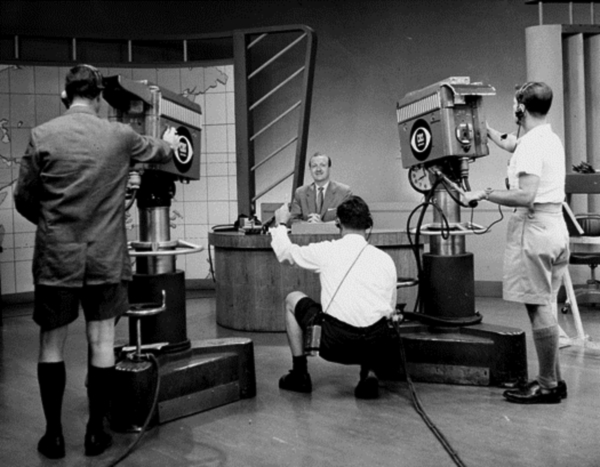
July 20, 1954: Walter Cronkite with cameramen Allen Scott and Kurt Oppenheimer and floor director Bob Jacobson wearing Bermuda shorts for a CBS Morning Show scene shot with RCA TK10s. Photo courtesy CBS Photo Archive. This image cannot be archived, sold, leased or shared.
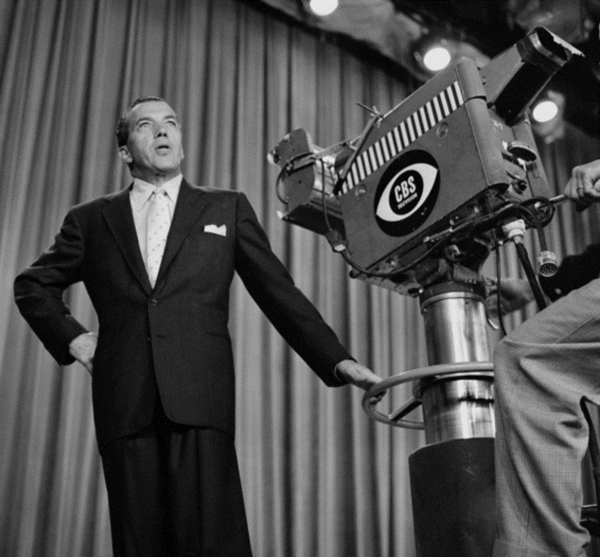
June 26, 1955: Toast of The Town host Ed Sullivan with a teleprompter-equipped RCA TK30 mounted on a TD-1 pedestal. Photo courtesy CBS Photo Archive. This image cannot be archived, sold, leased or shared.
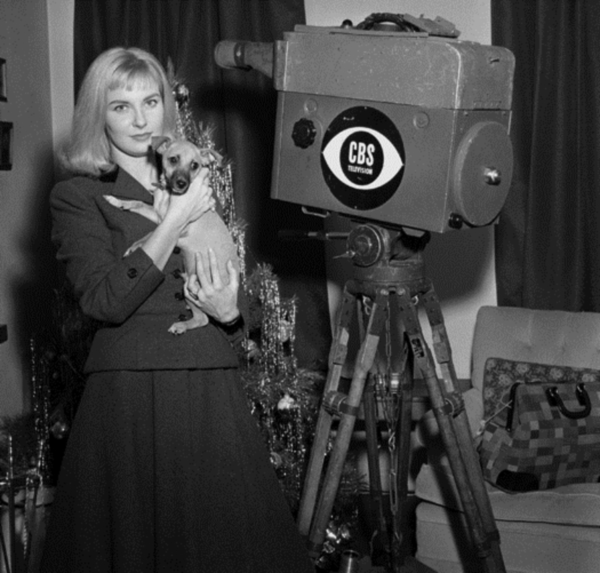
December 27, 1957: Joanne Woodward in her home for Person To Person. Next to her is an RCA TK30 with a lens-free protective traveling turret. Below are three more Person To Person guests including Bobby Kennedy, Bing Crosby and Mickey Rooney with RCA TK30s dropping in for a visit, an one even sporting a custom CBS logo and a camerman that looks a lot like David Brinkley.
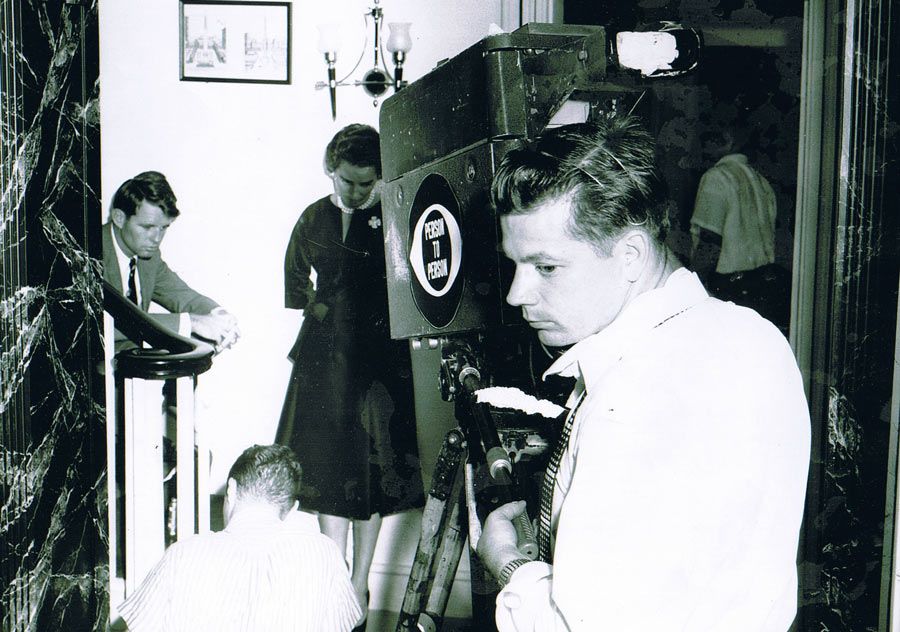
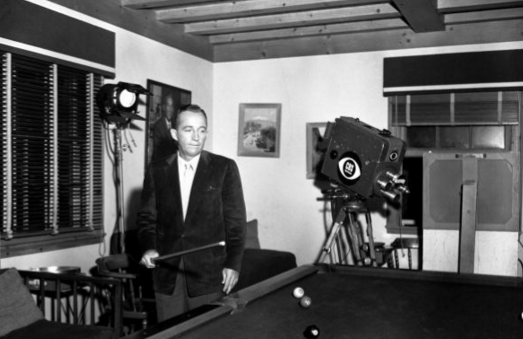
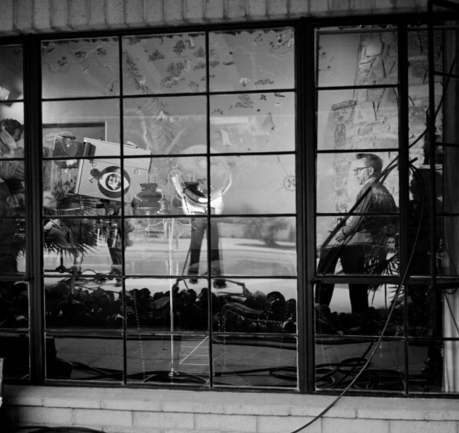

March 24, 1964: Muhammad Ali, who has just changed his name from Cassius Clay, is interviewed by Eric Sevareid for The CBS Evening News with Walter Cronkite. As a testament to the quality of the CBS engineers, notice that this is an RCA TK10 mounted on a new TVP pedestal…a 10- to 15-year-old camera on one of the first pneumatic pedestals available. Photo courtesy CBS Photo Archive. This image cannot be archived, sold, leased or shared.
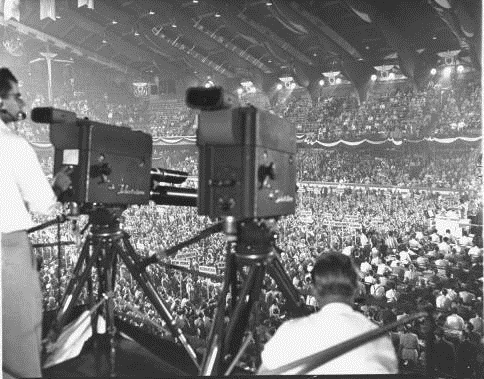
Eisenhower and Nixon was the ticket that had the GOP high in 1952 and as you can see, some of the cameramen for CBS were pretty high too. Photo courtesy Life Magazine

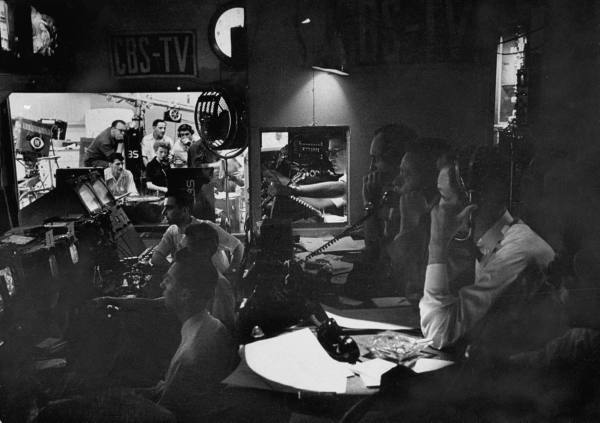
CBS alone had over a dozen cameras in the 1952 convention and even a full control room and studio to do live spots. Above is the control room built inside the hall just to handle commercials, and below is Betty Furness preparing for a live Westinghouse spot. Photo courtesy Life Magazine
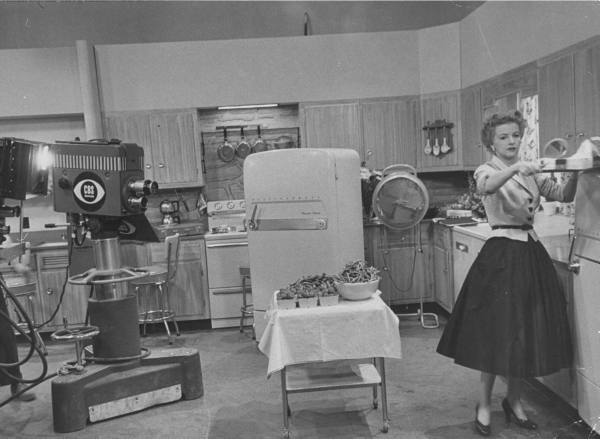

Come November, Walter Cronkite and company (above and below) worked to report election results from their New York studios at Grand Central with Studios 41 and 42 combined for the occasion. Ike won. Photo courtesy Life Magazine
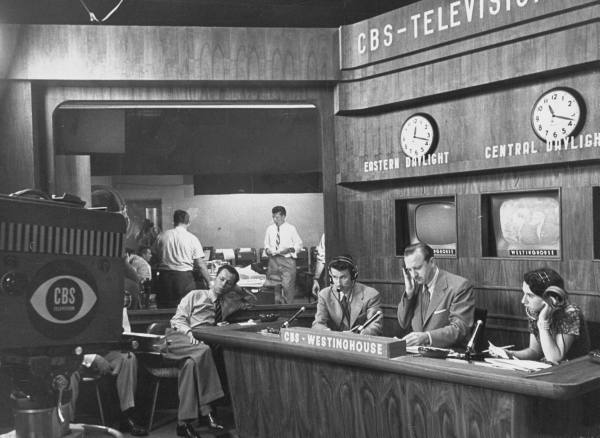

TK10s were in use at CBS until just before the Kennedy-Nixon election night coverage in 1960, when the new Marconi Mark IV cameras were installed for that coverage. This is the last big RCA election night at CBS…the 1958 midterm election votes were counted for Senate and House members and reported with TK30s.
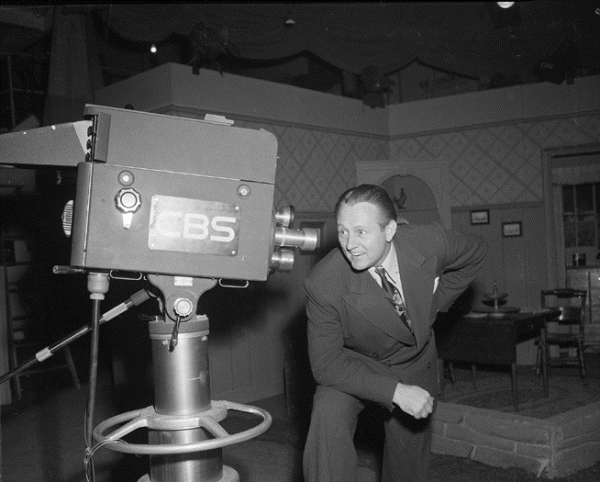
Above is Art Linkletter on a February 13, 1952 visit to CBS Columbia Square studios looking into his future. Art’s House Party show had been on CBS radio since 1945, but in September 1952, House Party would move to television and run until September 1969. Linkletter’s show started before Television City was completed in November 1952, but moved in during January 1953. Since most of the other CBS programs were still in production and couldn’t move until summer, Linkletter and his gang basically had the whole place to themselves for a few months. Photo courtesy CBS Photo Archives. Copyright CBS. All rights reserved. This image cannot be archived, sold, leased or shared.
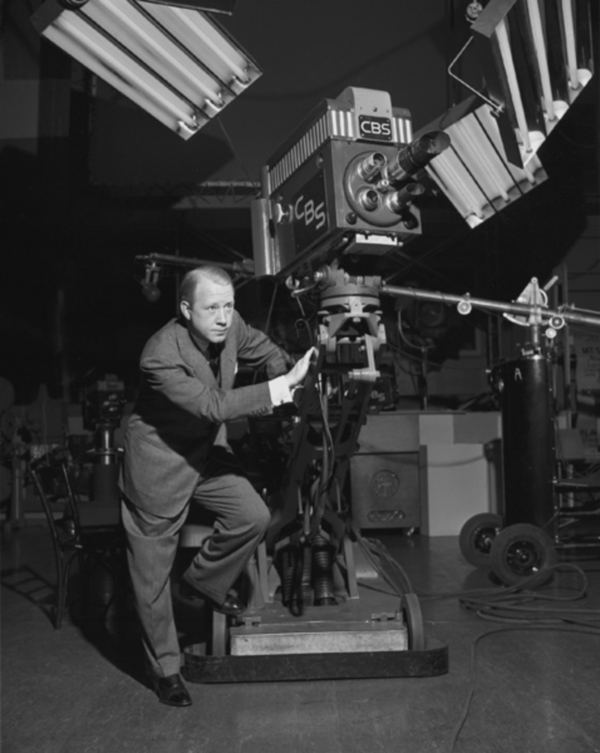
Here’s “paint ’em grey” Frank Stanton at CBS New York in May 1949. As network president from 1946 to 1973, Stanton ordered early on that all RCA insignia be removed from the CBS cameras, and that all cameras from any manufacturer were to be painted CBS grey (think primer grey) for uniformity. Here he is with an RCA TK10 on a Houston Fearless dolly in Studio 41. Photo courtesy CBS Photo Archives. Copyright CBS. All rights reserved. This image cannot be archived, sold, leased or shared.
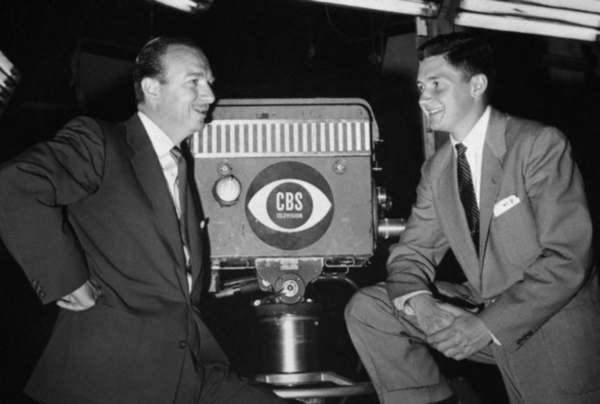
Circa 1954, CBS news anchor Walter Cronkite with an unnamed but familiar-looking man that resembles a very young Eric Sevareid. Here’s an RCA TK30 with its friction head mounted on a TD 1 ped in Studio 41. Photo courtesy CBS Photo Archives. Copyright CBS. All rights reserved. This image cannot be archived, sold, leased or shared.
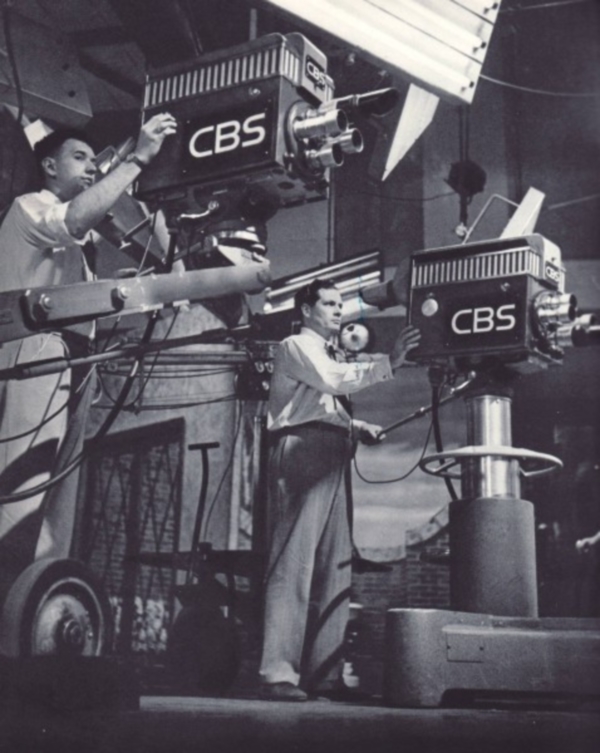
Photo is prior to the November 1951 introduction of the CBS eye logo. Notice the extra long boom arm…this is a CBS modification called the “long tongue” adapter that also required an extra 200 pounds of lead weights at the base of the boom arm. This in Studio 41 at the Grand Central location. Photo courtesy Life Magazine
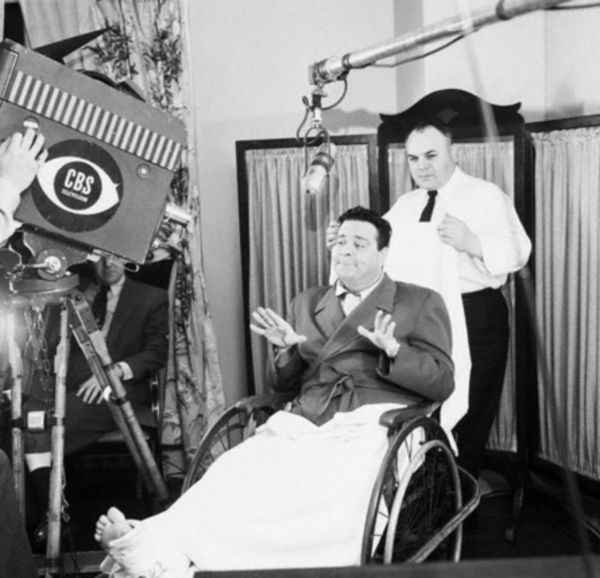
Hospitalized with an ankle injury on the prior week’s telecast, comedian Jackie Gleason goes before the cameras in his hospital room at Doctor’s Hospital in Manhattan on February 6, 1954. Gleason’s show originated at CBS Studio 50, or what we now call the Ed Sullivan Theater. Photo courtesy Life Magazine.
TK10s And K30s at ABC
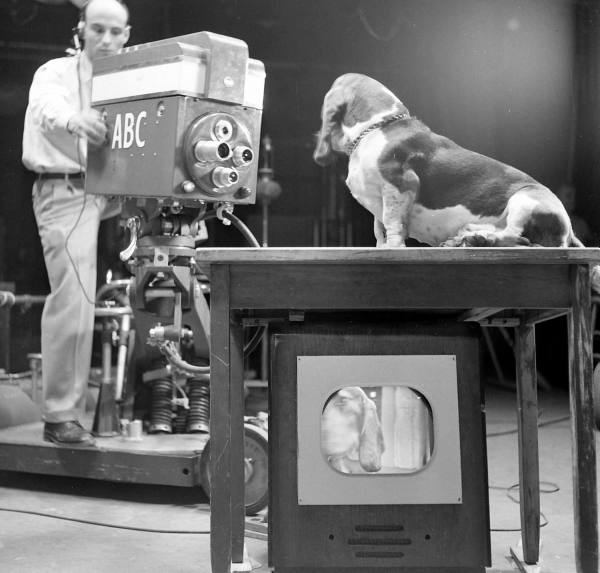
This was ABC New York’s top cameraman Mike Friedman on their first ever shows called Screen Test. This TK10 is mounted on a Houston Fearless Panoram dolly. It’s one of the most versatile camera platforms ever made, but for the cameraman, it’s probably a pain in the back and shoulders. If you can get the shot seated, it’s not too uncomfortable, but that’s probably only thirty percent of the time. The other seventy percent of shots include a lot of crouching. straddling and leaning. It helps to be part mountain goat. Photo courtesy of Life Magazine

August 1950 is a busy time for TK10s at KECA, which in February of 1954 became KABC in Los Angeles. Photo courtesy of Life Magazine
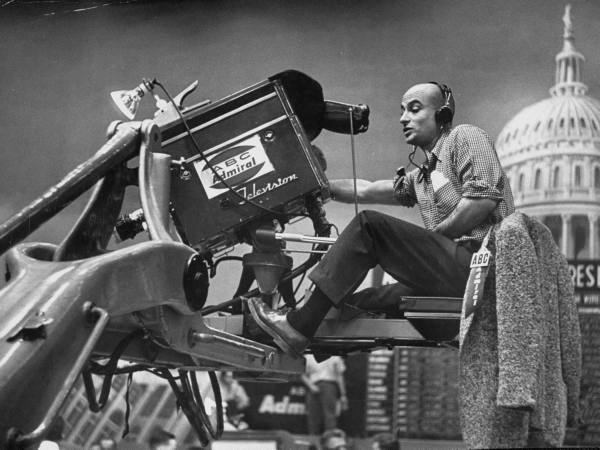
This is Mike Friedman again, who will later move to ABC Hollywood and become one of the first ever handheld camera operators, pioneering the way shots are made on ABC’s Wide World Of Sports. A TK10 covers 1952 election night results from atop a Houston Fearless 30B stage crane. Photo courtesy of Life Magazine.
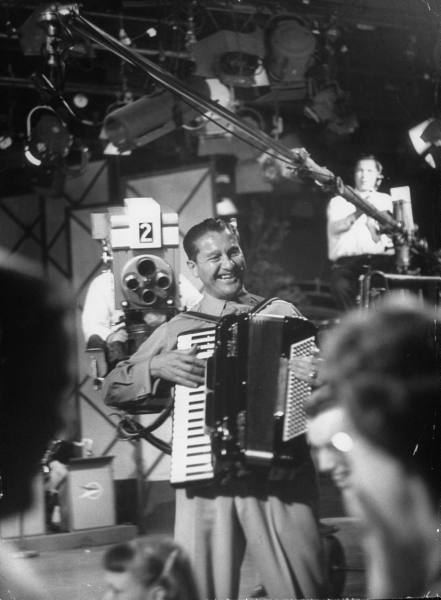
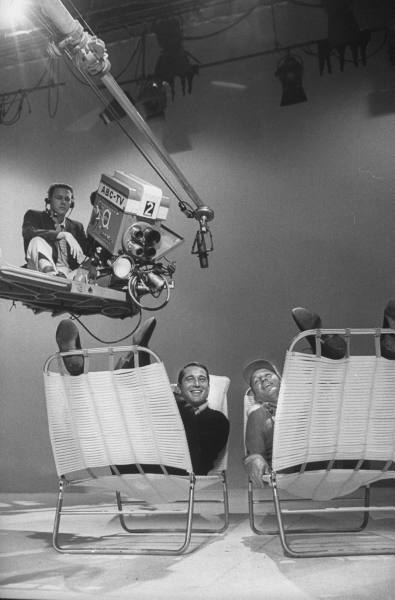
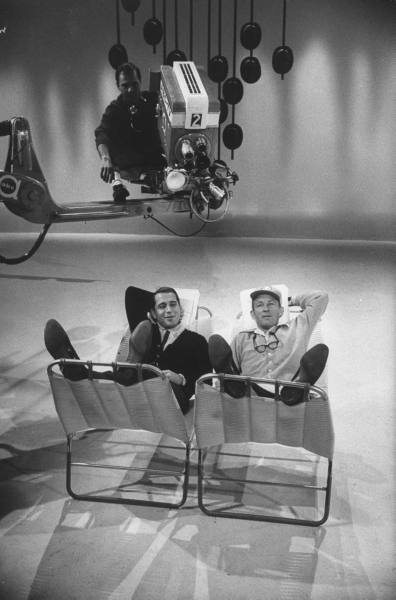
These three very rare photos show fully-dressed ABC TK10s at work in Los Angeles with Lawrence Welk in 1957, and with Bing Crosby and Perry Como in 1960. The cameras were painted red and white. Photo courtesy Life Magazine.
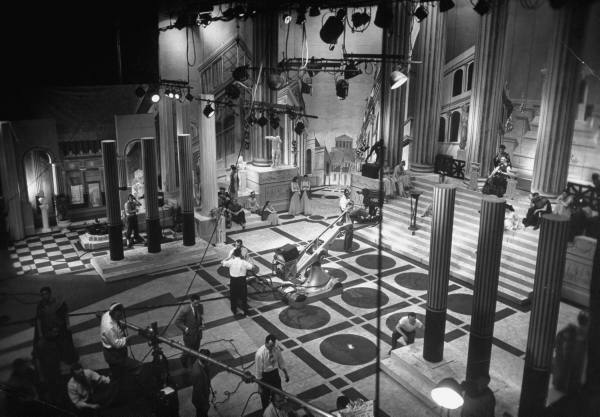
1956 shot inside ABC’s TV 1 studio in New York with TK10s at work. Photo courtesy Life Magazine.

This is a very rare early shot of The Lawrence Welk Show from ABC Prospect’s famous Studio 55. The crane was built by Warner Brothers, and left on the lot when ABC bought it from them. The painted backdrop above the stage is from the WB movie On With The Show, as is the theatrical set and columns. On With The Show was shot here in 1929 on what was then called Warner Studio 2, and this is when the huge, 5 story fly loft was added to the studio.
Speaking of the famous Studio 55, the image below is an extremely rare look at the inside of 55 just a few weeks after ABC took over the WB lot in October of 1948.

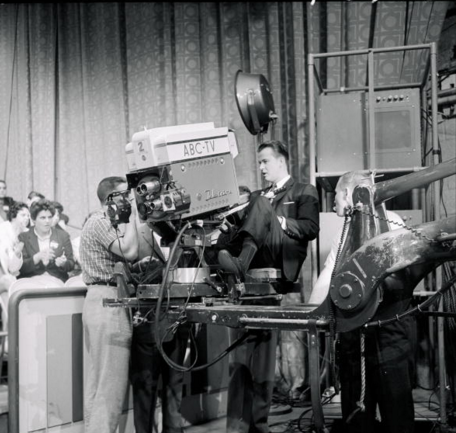
Above and below, Dick Clark at ABC Hollywood doing a couple of weeks of Bandstand from California…just testing the waters before the move. The camera is a TK10.
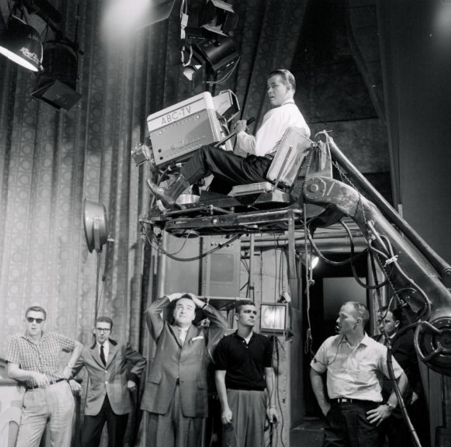

Ah, the old “shooting down in a hole” trick. Above and below, all is well on the wide open plains…until they tilt up. Hollywood has some special magic when it comes to finding “looks like” locations near the studio and this is one of them. As long as the cameraman keeps this zoom shot tight, you won’t see the telephone poles and the modern houses with their TV antennas, driveways and cars. Many ABC people will recognize this as the parking lot at the old Television Center at the corner of Prospect and Talmadge. This was during a live episode of “Marshal of Gunsight Pass”, which was kid’s show, produced daily in Studio 2. Photos courtesy Life Magazine.

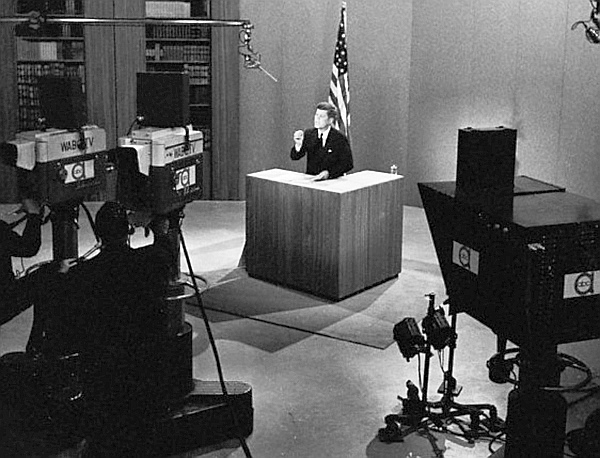
At WABC New York, Democratic Presidential candidate John F. Kennedy speaks on New York set during the third Kennedy-Nixon televised debate. Vice President Richard Nixon, the Republican candidate, spoke from the KABC studio in Los Angeles, California on October 13, 1960. For the great backstory on these historic debates, please click here to see it in the Gallery. Photos courtesy Life Magazine.
Other TK10s And TK30 Shots

David Susskind hosts a 1959 episode of Open End in the WNTA studios. Photo courtesy of Life Magazine
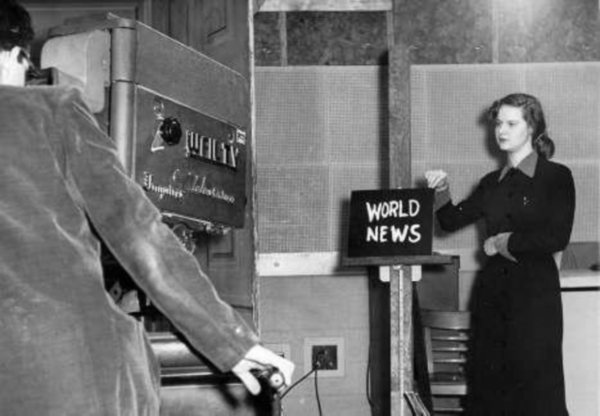
Above and below, early TV classes held in the WFIL studios. Interesting pedestal below. Photo courtesy Broadcast Pioneers of Philadelphia. To see an early Philco camera, follow the link and look at the 1947 WPTZ images on their great site.
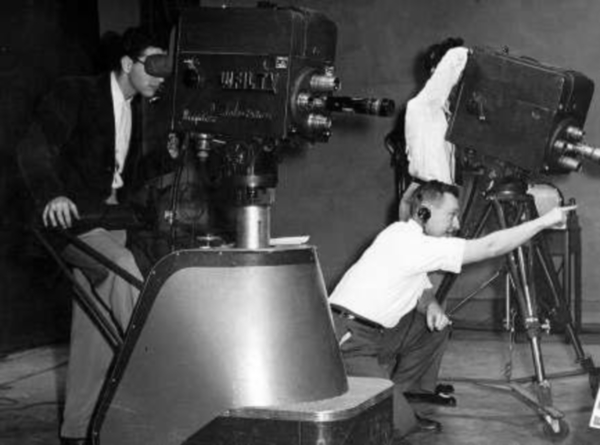

From WBAP-TV in Fort Worth-Dallas, a fine new looking TK10.

Classic TK10 at work on a 1952 daytime drama at WOR in New York. Looks like some sort of rear projection equipment in the foreground…it could be for showing “the road behind” in a car scene coming up.
Photo courtesy Life Magazine

Radio star Fred Allen and Ben Cross opine before a brand-new TK30 on the first day New York’s WPIX went on the air in 1948. Photo courtesy Life Magazine
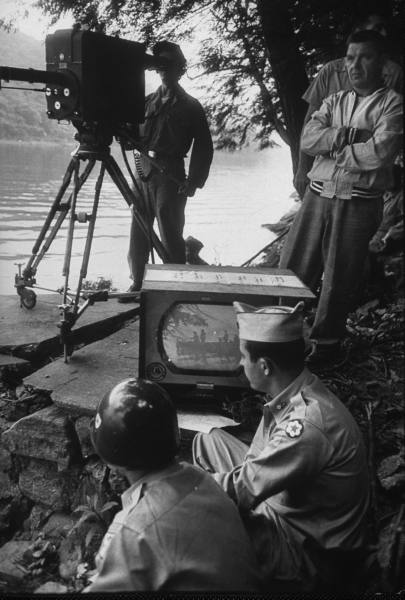
August 1953 shot of a TK30 at West Point with a massive 27-element Field Zoomar telephoto lens. Photo courtesy Life Magazine

RCA TK30 attached to an observatory’s telescope gazes into the Milky Way at WPTZ in Philadelphia in 1954. Today this is WKY-TV. Photo courtesy Life Magazine
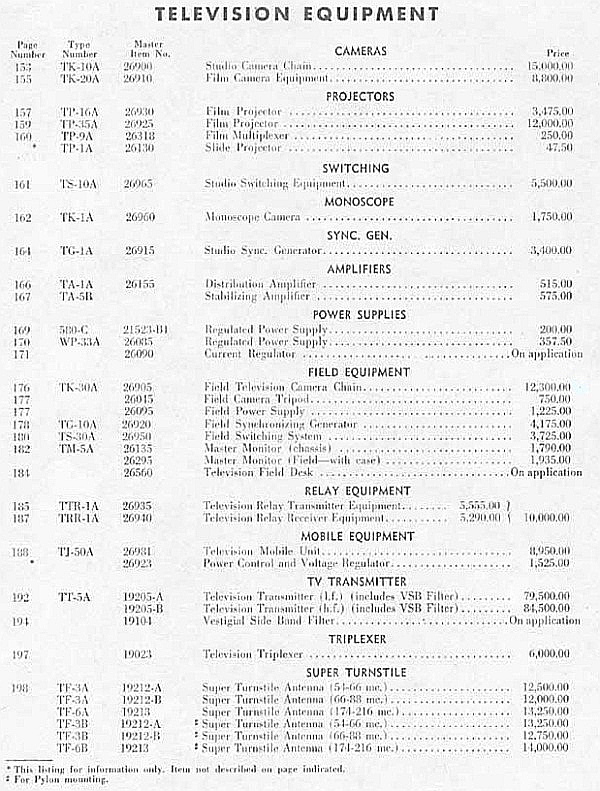
Above is the 1951 price list from RCA. Notice that the TK10 cost in 1951 is $15,000. In today’s money, that comes to $135,000. In 1914 the Federal Reserve Bank was created to “manage” our economy and money. Since then, the dollar’s purchasing power has diminished at a shocking rate. What you could buy in 1914 for $1000 will now cost you over $222,000. Still think we need the Fed? Not me!
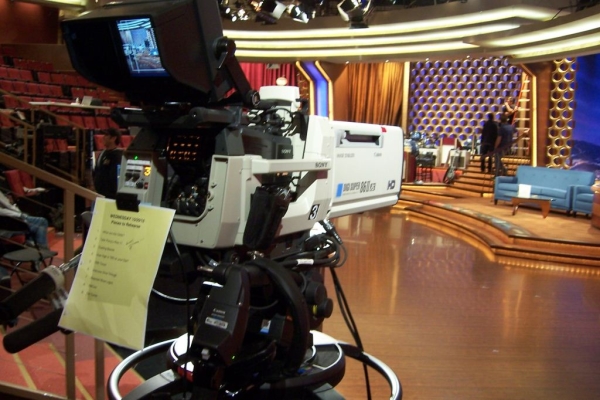
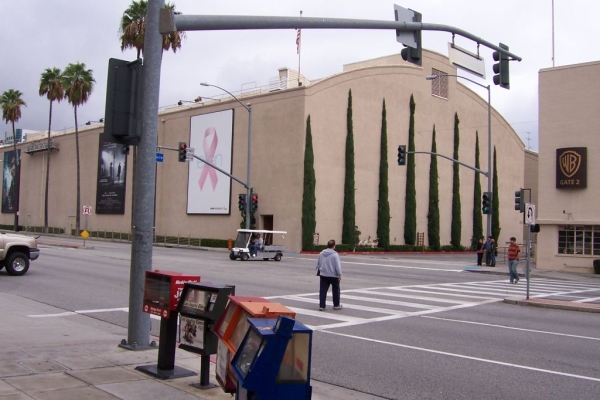
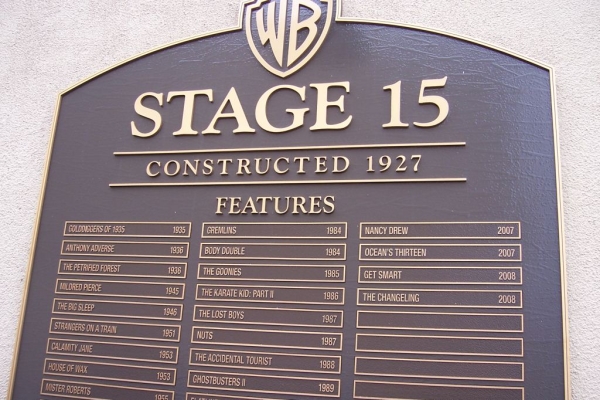


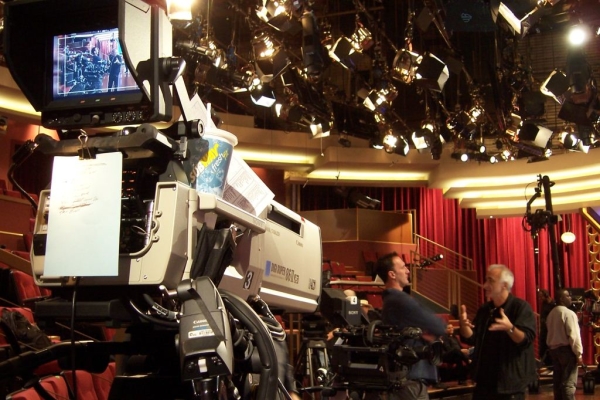
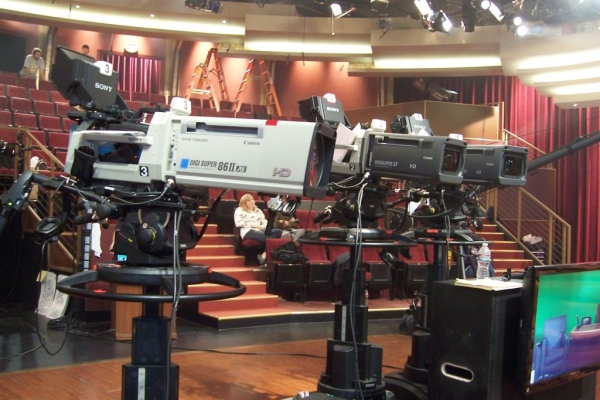
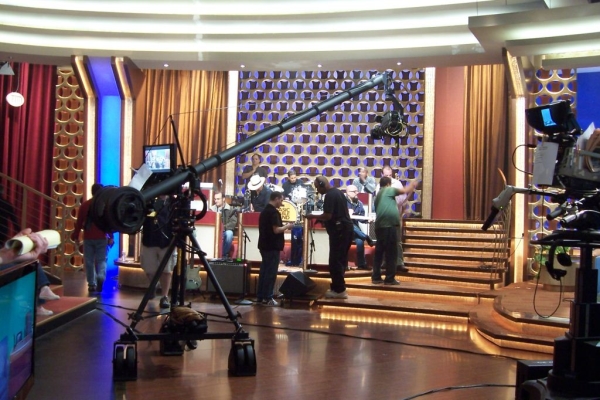
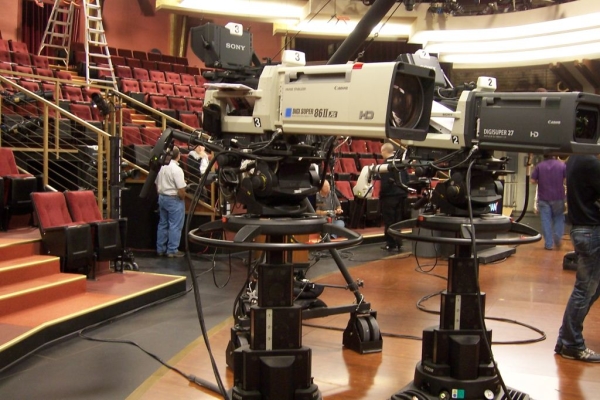


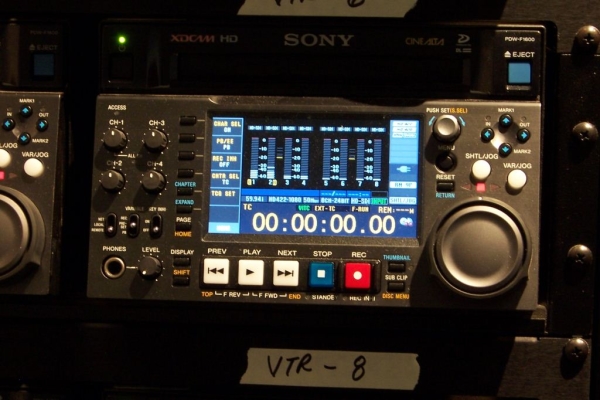
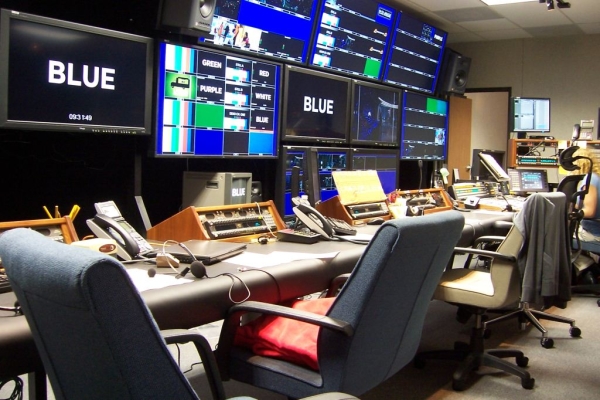
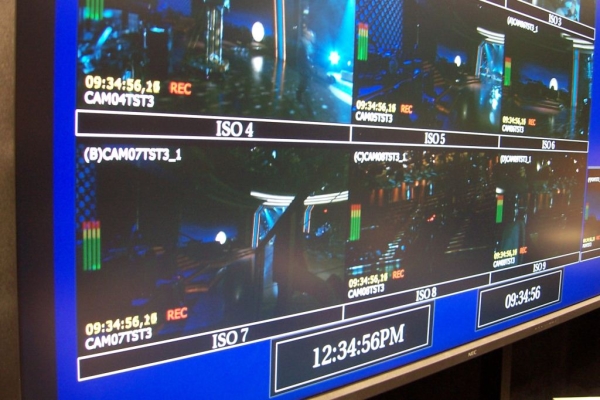
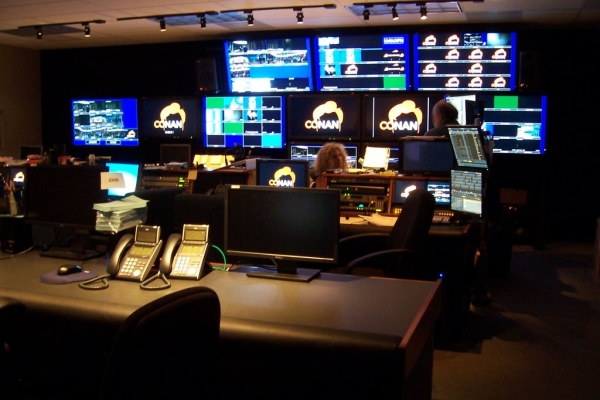
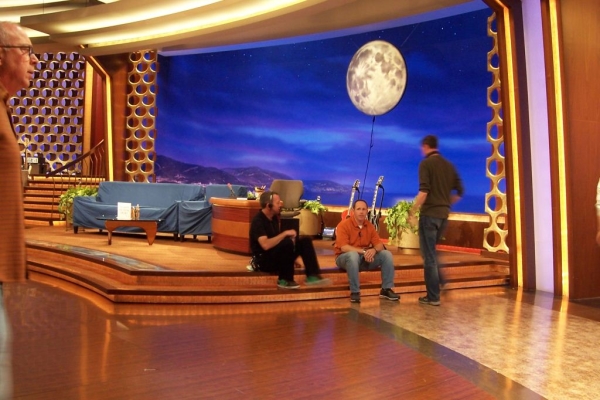
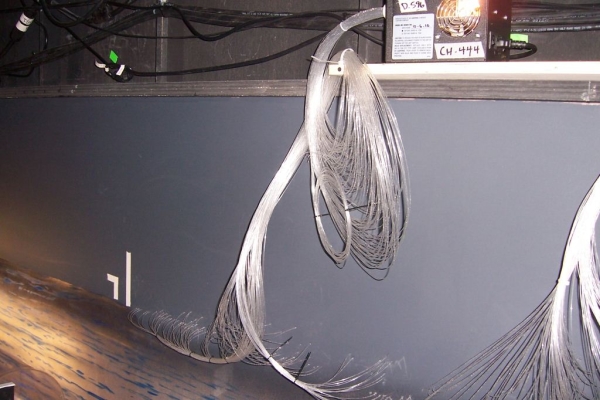


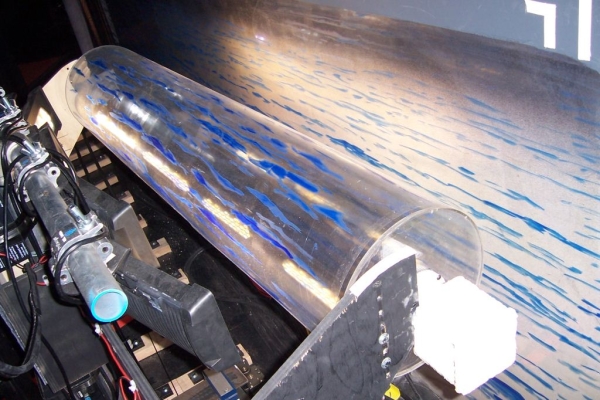
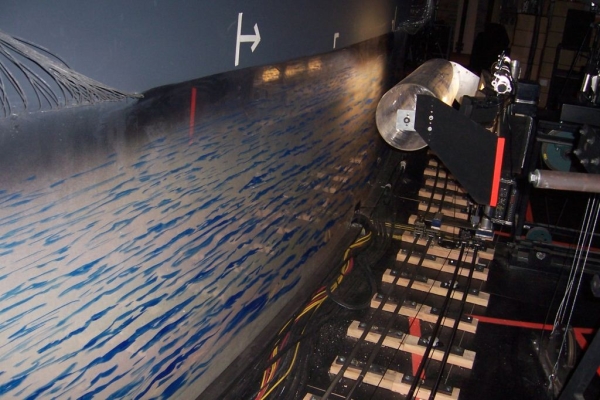
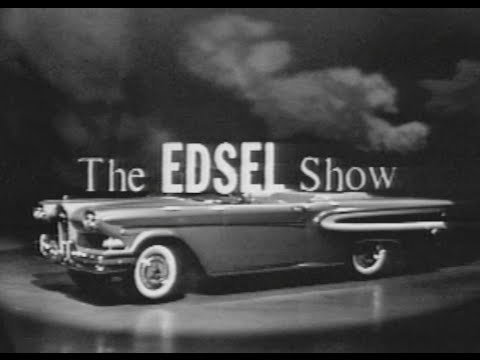
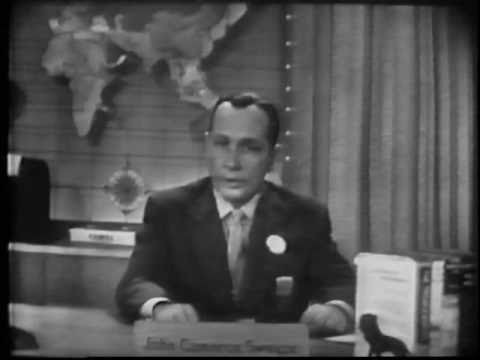
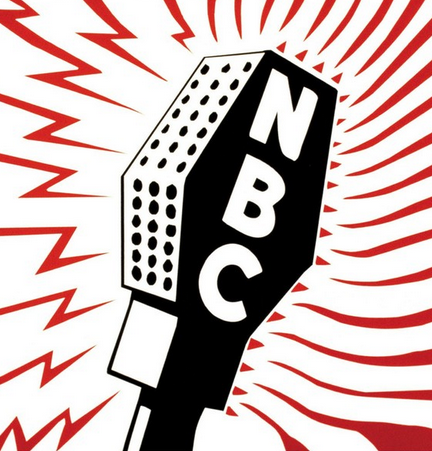
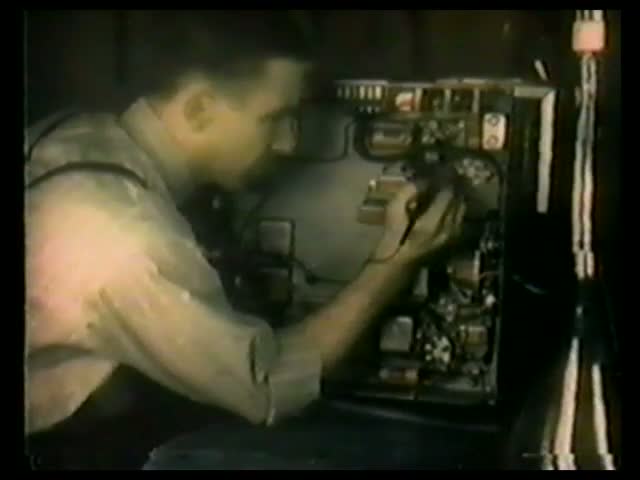
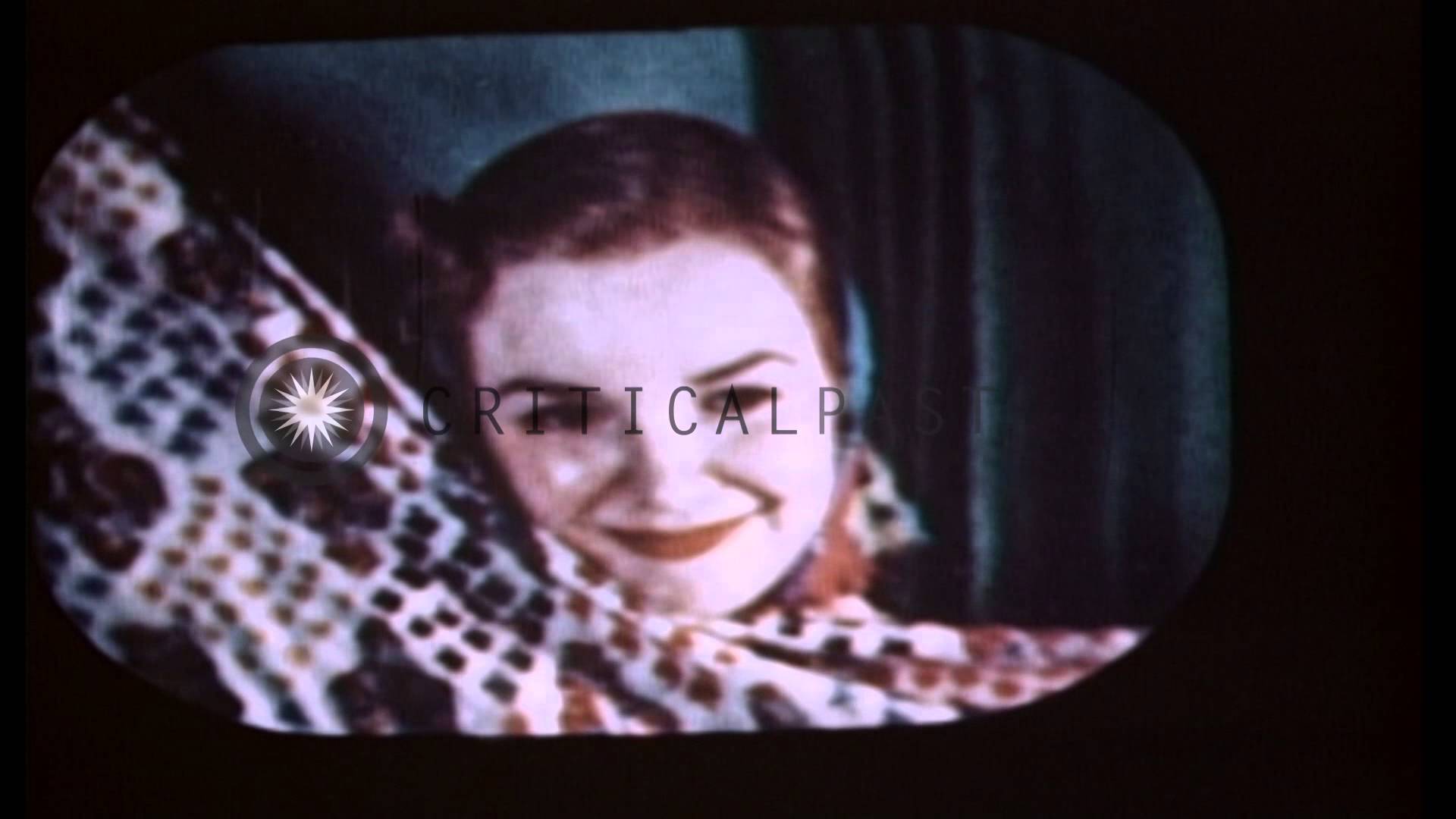

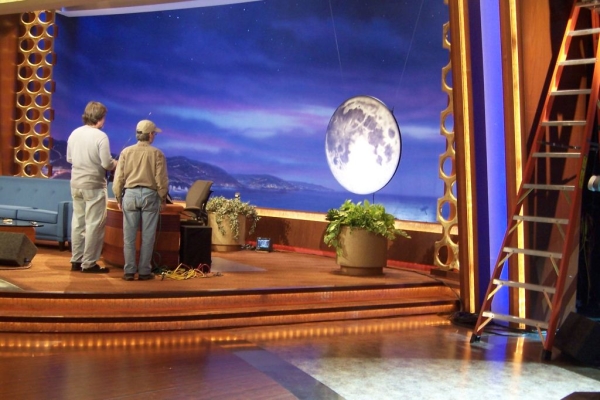
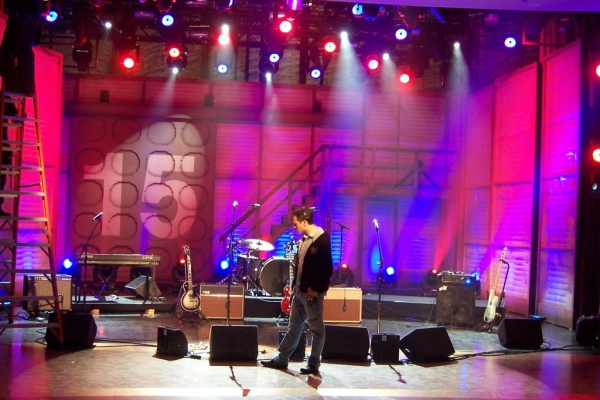
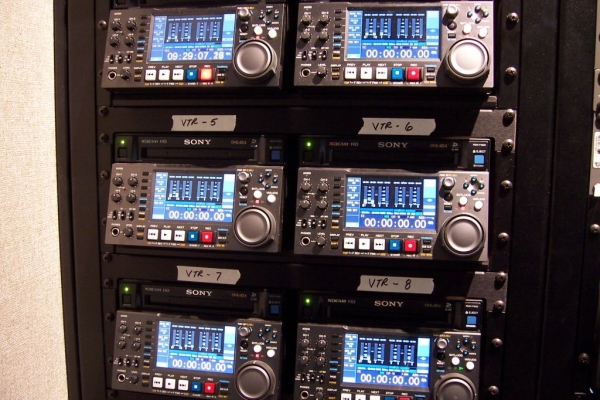
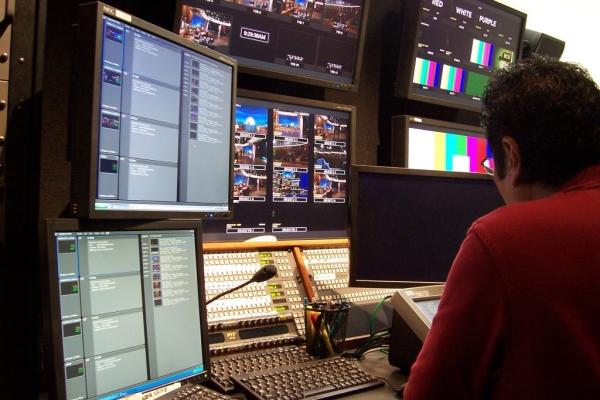
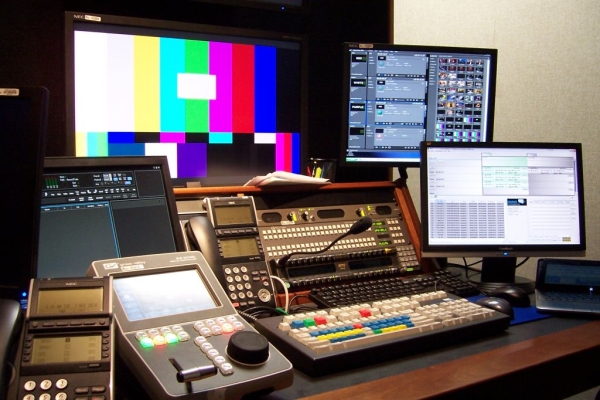


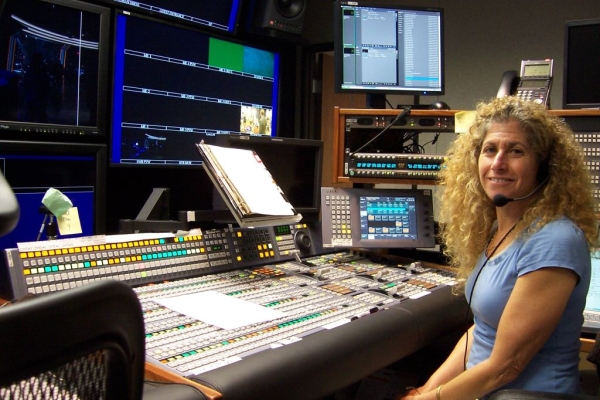
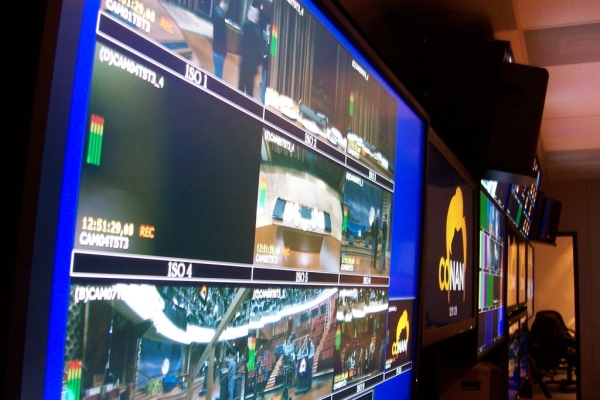
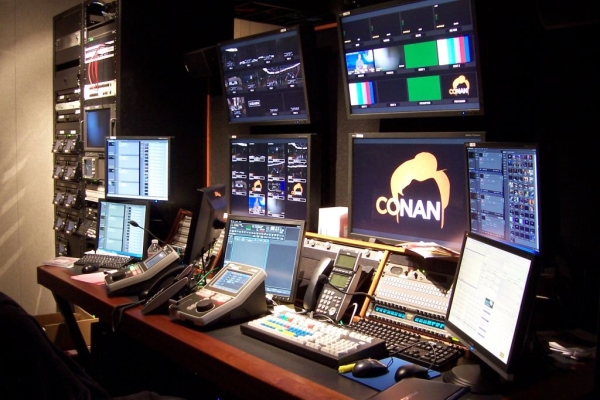

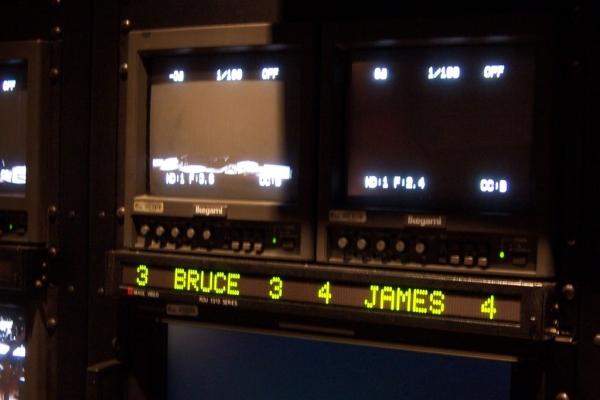
















 An RCA TK10, the studio-based sibling of the TK30, wearing the identity of New York’s NBC affiliate WRCA-TV (the former WNBT and the current WNBC). See the holes at the top and bottom of the side doors? Complaints about the heat led RCA to offer kits that helped bring in cool air and expel heat. This feature is mostly found on the network cameras, since they got hotter.
An RCA TK10, the studio-based sibling of the TK30, wearing the identity of New York’s NBC affiliate WRCA-TV (the former WNBT and the current WNBC). See the holes at the top and bottom of the side doors? Complaints about the heat led RCA to offer kits that helped bring in cool air and expel heat. This feature is mostly found on the network cameras, since they got hotter. 


























































